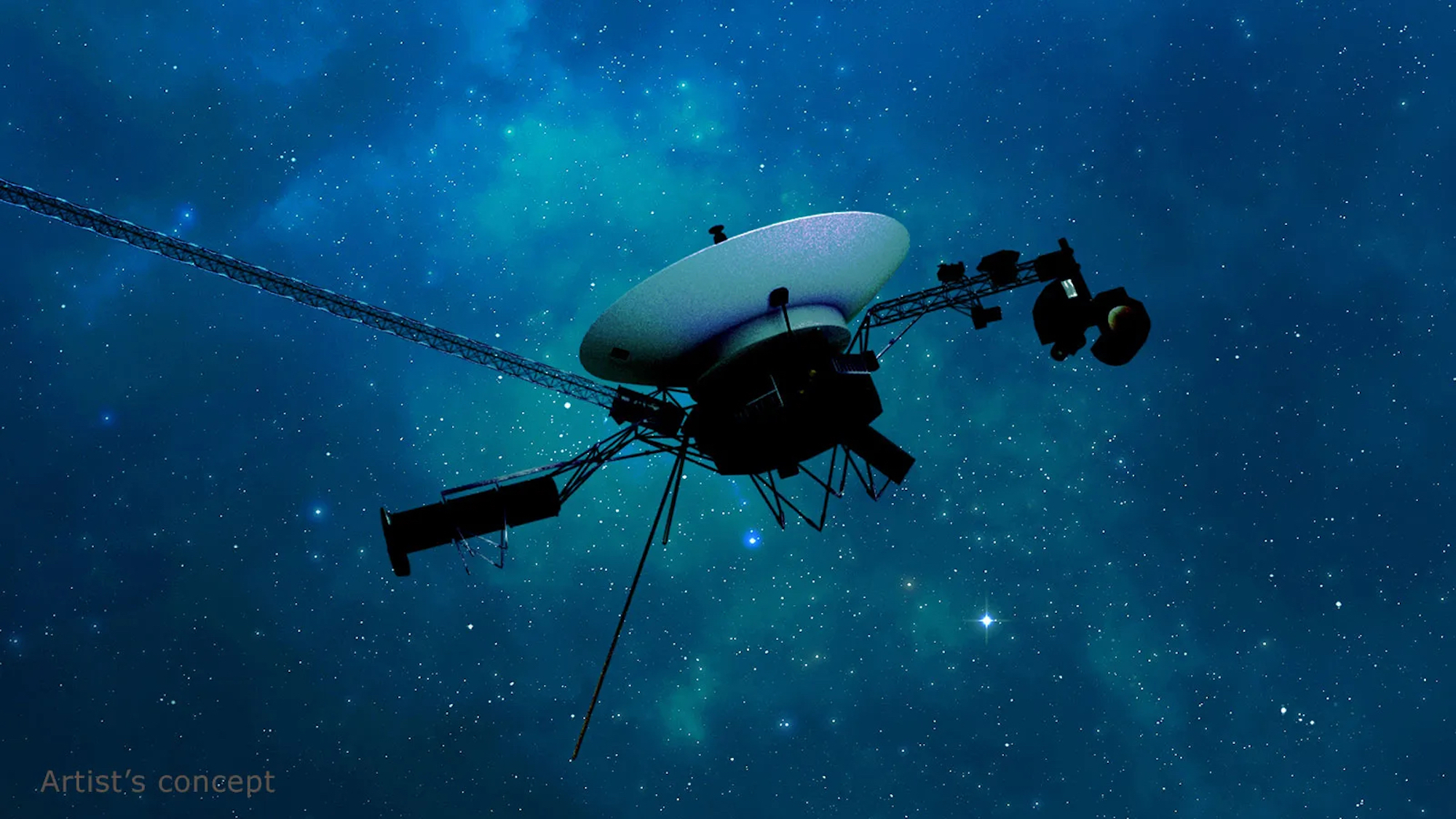

Against all odds and expectations, both Voyager 1 and Voyager 2 are still going strong after nearly half a century of hurtling through—and far past—the solar system. To help boost the potential for the probes’ continued operations, engineers at NASA’s Jet Propulsion Laboratory have beamed out two software updates across the billions of miles separating them from the historic spacecraft. If successful, the pair of interstellar travelers could gain at least another five years’ worth of life, if not more.
On October 20, NASA announced plans to transmit a software patch to protect Voyager 1 and 2 against a glitch that occurred within the former’s system last year. In May 2022, NASA started noticing inaccurate readings coming from Voyager 1’s attitude articulation and control system (AACS). A few months later, engineers determined the AACS was accidentally writing commands into memory instead of actually performing them.
Although engineers successfully resolved an original data issue within Voyager 1 in 2022, the new patch will hopefully ensure such a problem won’t arise again in either probe. Receiving the patch will take over 18 hours to reach transmitters; Voyager 2 will get the patch first to serve as a “testbed for its twin” in case of unintended consequences like accidentally overwriting essential code. Given Voyager 1 and Voyager 2 are respectively 15 billion and 12 billion miles from Earth, engineers consider the farther craft’s data more valuable, as it still remains the farthest traveling human-made object. The NASA-JPL team will issue a command on October 28 to test the patch’s efficacy.
[Related: The secret to Voyagers’ spectacular space odyssey.]
The second planned tune-up for Voyager 1 and 2 involves the small thrusters responsible for controlling the probes’ communication antennas. According to NASA, spacecraft can generally rotate in three directions—left and right, up and down, as well as wheellike around a central axis. During these movements, propellant automatically flows through incredibly narrow “inlet tubes” to maintain the antennas’ contact with Earth.
But each time the propellant is used, miniscule residue can stick within the inlet tubings—while not much at first, that buildup is becoming problematic after the Voyager probes’ (many) decades’ of life. To slow the speed of buildup, engineers have edited the probes’ operational commands to allow both craft the ability to rotate nearly 1 degree farther in each available direction. This will reduce how often their thrusters need to fire. When engineers do need to enable thrusters, they now plan to fire them for longer periods of time, thus reducing the overall number of usages.
[Related: How is Voyager’s vintage technology still flying?]
“This far into the mission, the engineering team is being faced with a lot of challenges for which we just don’t have a playbook,” Linda Spilker, Voyager mission project scientist, said via NASA’s update. “But they continue to come up with creative solutions.”
Experts estimate both the fuel lines and software adjustments could extend the Voyager program’s lifespan by another five years. According to NASA, however, “additional steps in the coming years to extend the lifetime of the thrusters even more.”
